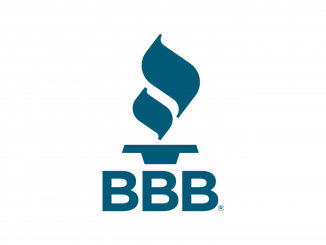
By Kenneth Surbrugg, Business Consultant, Missouri Small Business Development Center at Missouri Southern State University
When talking with entrepreneurs, I normally ask about their business plan. And more often than not, the business plan is just a series of thoughts. The entrepreneur has nothing in writing. There are several reasons for this. For some, the are scared that the plan will be in the wrong format, and nobody will take them seriously. Others find it difficult to write a plan for the business they are pursuing because they perceive that the business is too complicated for anyone to understand. And some will believe that an opportunity is so great and immediate that they simply do not have the time to write a business plan. Finally, others will not write a plan because they feel that once business begins, the plan will be useless due to the unknown factors that come up and alter business operations.
A business plan is a guide that explains the idea that you wish to pursue and the proof (the evidence) that the idea is actually a business opportunity. The business plan allows you to explain how you intend to structure the operations of the business to pursue this opportunity and how you will generate revenues, expenses, and profits.
There are two important words in the paragraph above: idea and opportunity. An idea is a thought with little to no supporting evidence that the thought is a business opportunity. For example, you may hear that an indoor soccer facility would be a great idea for your hometown. And that idea may make sense if you, or your children, play indoor soccer. But what evidence is there to support this idea? An opportunity is an idea with supporting evidence. Again, you may hear that an indoor soccer facility would be a great idea for your hometown, but this time, there is verified supporting evidence that there are enough paying players in the area to support such a business. The difference is in the evidence. If there is enough supporting evidence, then the idea turns into an opportunity.
So, back to business plans. Business plans help articulate opportunities, and a business plan should contain the following three items:
- A logical statement of a problem and a solution. This should state the problem that you intend to solve and your solution for that particular problem.
- A significant amount of evidence of support. Do you have sufficient evidence that this problem is worth solving? Will your solution solve this problem? Are there enough people looking for a solution? Will people pay for your solution?
- An acknowledgement of the risks, gaps, and assumptions that might prove you wrong. No matter how much evidence you collect, unplanned circumstances can still occur. Acknowledge the risks and assumptions in your thought process and evidence that could derail your business. What gaps exist, that if not filled, can lead to partial acceptance, or market failure?
Of course, your business plan also needs to include a description of the business, the products or services it will offer, details on the organization and management team, an explanation of its operations, a market analysis, the marketing and sales channels that will be used, any funding requests, financial projections, and supporting documents. These sections explain how you intend to operate your business in order to create a successful enterprise.
The business plan identifies the mission, purpose, and vision of the company. It explains how the company intends to deliver the new product or service to its identified potential users, the strategies that the business owners intend to pursue to generate sales and profits, and how success will be measured. Success can be thought of as attained goals. These short-term, mid-term, and long-term goals need to align with each other to show how the company intends to reach long-term profitability. These goals are unique to each business, and these goals are important to list. Goals help direct activities and resources.
Within the written business plan, you also need to provide financial projections (estimates) of revenues and expenses. The business plan explains how the business will operate to generate sales and expenses – and this is detailed in a financial projection worksheet. This worksheet identifies future revenue streams and projected expenses. The business plan explains what these dollar amounts represent. What expenses will the business incur to help generate revenues? How realistic are these numbers? Are these figures in line with industry averages and, if not, can the entrepreneur explain why the amounts differ? It could be a strategic decision to price higher than the industry. If this is the case, then the cost of goods sold expressed as a percentage of sales will be lower than the industry average. This is acceptable as long as the entrepreneur can explain this justification of a higher price and has enough evidence to support this higher pricing strategy. This is where the proof of concept and industry data is very helpful to the entrepreneur.
Writing a business plan is important. It helps identify how a business intends to operate in bringing a service or product to market for potential customers and how the business intends to meet goals to generate long-term profitability. Obstacles will arise and the entrepreneur will need to explain how they intend to overcome these obstacles. In the end, the business plan will help justify investment into an idea that has enough evidence to be considered an opportunity.







Be the first to comment